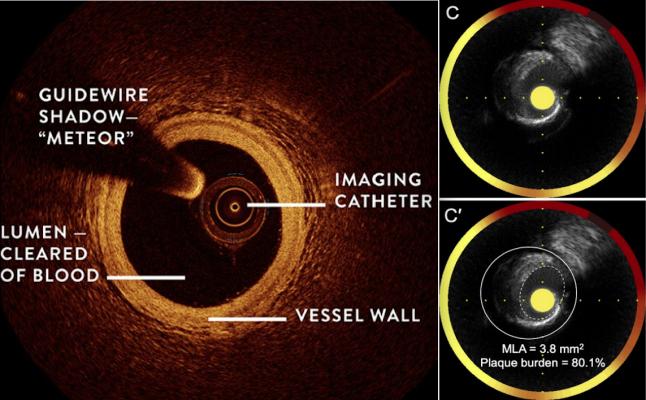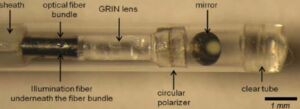Introduction
It’s no secret that heart disease is still one of the leading causes of death in the United States. However, the numbers may surprise you. For example, did you know that someone dies every 36 seconds from a cardiovascular disease? Heart disease is an extremely difficult disease to deal with because the heart lacks regenerative properties of other organs such as the liver, making it deadly. This is why such a big emphasis is placed on the prevention of heart disease, as proper diagnosis and preventative medicine can greatly increase the life expectancy of those predisposed to heart problems. With all these problems in the realm of cardiology, it’s no wonder that doctors and researchers are strengthening the intersection of photonics and heart disease to effectively diagnose, prevent, and potentially even treat these cardiovascular ailments.
Photonics techniques to prevent heart disease
It is better to prevent heart disease than wait to treat it once symptoms arise. One type of heart disease that can cause serious medical complications is the buildup of plaque in the arteries. This buildup causes constriction of blood flow, which will result in non-ideal bodily function as less blood is able to travel to the tissues that need oxygen. The body may recognize this, and to compensate, will increase its cardiac output by increasing the volume that is pumped per contraction, along with an increase in heart rate. Over time, these bodily compensations will cause more heart problems in the future. If that’s not enough, the plaque may cause clotting, which has the potential to start a heart attack.
One way that photonics can prevent heart disease is by an early diagnosis, so that lifestyle changes can take place before it develops. In order to observe the interior of arteries, physicians can use a method known as “Intravascular Imaging.”

Near infrared spectroscopy (NIRS), right, enables a spectral analysis of the walls visualizing areas of fatty content. This specifically allows to identify lipid-core plaques, generally associated with heart attack-causing plaque ruptures. Courtesy of DAIC.
Intravascular imaging is imaging taken near the heart’s main arteries that help spot problems associated with the heart. Typically, it is used to diagnose coronary heart disease, which is where the heart cannot deliver enough oxygen rich blood to the body because of a buildup of fatty substances (plaque) in the coronary arteries.
Intravascular Photoacoustic Method
The spotting and sensing of this plaque buildup can be spotted with various photonic devices. One such device is an “Intravascular Photoacoustic” machine, which uses a nanosecond laser to excite and heat up biological tissue inside the artery. This laser causes the cells to emit sound waves that follow from the cell excitation. The difference in heat absorption and excitation by various types of tissues will reflect different acoustic signals. This machine is coupled with an intravascular ultrasound that can help identify the composition of the arterial wall, helping visualize plaque in the observed artery.
Intravascular Laser Speckle Imaging Method
A future application of cardiovascular sensing is intravascular laser speckle imaging. This technique is also used to detect coronary plaques that will lead to coronary heart disease. It does this by seeing how light speckles, using the various patterns to measure the mechanical properties that it shines upon, (in this case, the coronary plaque’s stability–unstable is more dangerous because it can rupture, leading to a greater chance of clotting and a heart attack).
The actual device is composed of a small diameter intravascular catheter that has an optical fiber bundle, a refractory lens, a circular polarizer, a mirror, and a clear tube. Light is shot through via an illumination fiber, which travels through the optical fiber bundle to the refractory lens, which images the tissue speckle patterns onto a CMOS sensor (sensor that translates light into electrical signals). This speckle pattern from the GRINS Lens is translated via the CMOS sensor, and the fluctuation in pattern that is seen from the CMOS sensor is charted. The pattern exhibited can predict certain viscoelastic properties to determine the stability of the plaque that is being observed.
This technology is still in early stages of development, but will most likely be a powerful tool used by researchers and physicians later to examine the likelihood of someone developing coronary artery disease based on the type of mechanical properties that are currently observed within the artery.

Laser Image Speckling Device used to diagnose heart disease. Courtesy of Seemantini Nadkarni, Wellman Center for Photomedicine.
Photonics as treatment for heart disease
Treating Coronary Heart Disease
Photonics isn’t just used to diagnose and measure amounts of plaque in the arteries. There are special emerging treatments that can be used to treat different types of heart disease. For instance, there is the laser ablation technique, which removes material from the surface by irradiating it with a laser. This laser ablation technique is used to open up clogged arteries. The device of choice is a high-energy pulsed excimer laser which can be used to treat obstructive coronary heart disease, effectively destroying the plaque and opening up the arteries. However, this application is still heavily researched as these high energy lasers can sometimes cause undesirable and damaging thermal effects within the artery walls.

High Precision Laser Ablation System which could be used for heart disease therapy. Courtesy of Wikimedia Commons.
Treating Arrhythmia
Another type of heart disease that may be treatable with photonics is cardiac arrhythmia. Cardiac arrhythmia is an irregular heartbeat that can be too fast or too slow, creating more complications within the body. This is usually caused by the incorrect electrical signaling which causes the heart to beat. Sometimes, certain paths that electricity takes to the heart’s sinus node (sinus node in the heart keeps heartbeat steady and regular) are erratic, which can cause arrhythmia. One way to treat arrhythmia is by interrupting or breaking these paths, so that the electricity can take the correct path to the sinus node. Using precise laser ablation to create these elongated cuts effectively breaks these erratic current paths without significantly damaging the heart tissue. When used correctly, laser ablation is a method which may increase the success rate of treating arrhythmia.
Conclusion
The use of photonics in cardiology can aim to not only diagnose and observe the onset of diseases within the heart, but may also be effective at treating these deadly diseases as well. With new and emerging technology to treat coronary heart disease and arrhythmia, more research will be done to move towards the eradication of all heart disease, assisted by the light that photonics provides.
This post was brought to you by art photonics - Global leader in development and manufacturing of specialty fiber products
